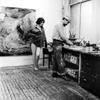Women in Art, Craft, and Design, Midcentury and Today at National Museum of Women in the Arts This Fall
- WASHINGTON, DC
- /
- July 14, 2015
The National Museum of Women in the Arts (NMWA) presents Pathmakers: Women in Art, Craft, and Design, Midcentury and Today, an exhibition that explores the lasting impact of women artists and designers on postwar Modernism. On view Oct. 30, 2015–Feb. 28, 2016, the show presents more than 80 objects including furniture, ceramics, textiles, jewelry and art. Reflecting the continuing popularity of midcentury design today, the exhibition also includes a selection of contemporary work that builds upon the accomplishments of an earlier generation.
In the 1950s and ’60s, an era when painting, sculpture and architecture were dominated by men, women had considerable impact with alternative materials such as textiles, ceramics and metals. Visionaries in these fields include Ruth Asawa, Edith Heath, Sheila Hicks, Karen Karnes, Dorothy Liebes, Alice Kagawa Parrott, Lenore Tawney and Eva Zeisel. This group came to maturity along with the emerging American modern craft movement and had influence as designers, artists and teachers.
“For these mid-20th-century women, architecture and industrial design were essentially closed male societies. So they had to create their own professional pathways through ceramics, textiles and metals. They also found freedoms in academia, where their ideas helped inspire the next generation. The resulting serious, conceptually crafted objects helped define midcentury Modernism in the U.S.,” said NMWA Director Susan Fisher Sterling. “The exhibition also highlights contemporary artists influenced by these taste-makers—women who are working today in the interstices between the useful object and conceptual aesthetics.”
The exhibition also highlights the European context of the movement: émigrés, including Anni Albers and Maija Grotell, brought to the United States a belief in craft as a pathway to Modernist innovation. The work of Scandinavian designers such as Rut Bryk, Vuokko Nurmesniemi and Vivianna Torun Bülow-Hübe emphasizes parallels between women designers in the United States and Scandinavia. In addition, the exhibition presents contemporary artists whose work reflects the influence of these historical figures, including Polly Apfelbaum, Vivian Beer, the all-female Swedish design group Front, Michelle Grabner, Hella Jongerius, Gabriel Maher, Magdalene Odundo and Anne Wilson, among others.
“Pathmakers stresses the connections between midcentury and contemporary design and aesthetics,” said NMWA Associate Curator Virginia Treanor. “The installation will encourage the comparison of the modern and contemporary periods in a way that enables close inspection.”
Exhibition Highlights:
- One of designer Eva Zeisel’s (1906–2011) rarest works is the Belly Button Room Divider (1957), a prototype that never went into production. The room divider demonstrates her interest in organic form, as well as a playful sense of humor. Her career spanned 87 years, and her work appears in both the midcentury and contemporary design sections.
- Furniture designer Vivian Beer (b. 1977) highlights both the obvious differences and the more subtle overlap between “masculine” and “feminine” forms in Anchored Candy No. 7 (2014), which is reminiscent of a stiletto-heeled shoe with the sleek styling of a sports car.
- Marianne Strengell (1909–1998) was commissioned by the Aluminum Company of America (Alcoa) to develop an all-aluminum textile with the softness and warmth of hand-woven material. Alcoa was looking for new uses for aluminum after extensive military use of the material during World War II. Her Forecast Rug (1957) brought this industrial material into the home market.
- An installation of Ruth Asawa’s (1926–2013) singular hanging sculptures (ca. 1950–72) attracted renewed critical attention after her first retrospective in 2006 at the age of 80 at the de Young Museum in San Francisco. The artist’s volumetric yet delicate forms—seemingly drawn in the air out of wire—were groundbreaking in their use of a nontraditional material.
- Margaret Tafoya’s (1904–2001) signature “bear paw” vessels marry traditional Pueblo ceramic techniques with contemporary form. Tafoya influenced generations of ceramics artists, including Magdalene Odundo (b. 1950) and Christine Nofchissey McHorse (b. 1948), with the purity of her lines and the beauty of her burnished black surfaces.
- Polly Apfelbaum’s (b. 1959) site-specific installation Handweaver’s Pattern Book (2014) was inspired by the seemingly endless variations of grid-based patterns illustrated by the 1950s publication of the same name.
- Vivianna Torun Bülow-Hübe (1927–2004) was internationally known for her modernist silver jewelry, worn by celebrities such as Brigette Bardot, Ingrid Bergman and Billie Holiday. The Vivianna Bangle Watch (1969), manufactured by Georg Jensen, has no clasp, no numbers and a mirrored face. Torun said, “The watch is open ended to symbolize that time should not bind us, and the dial like a mirror reminds us that life is now.”
- Michelle Grabner’s (b. 1962) paintings and paper weavings have a strong relationship with midcentury grid-based textile designs, inspired by textiles’ patterned compositions and labor involved in their making.
- Dorothy Liebes (1897–1972) was one of a group of women chosen to design textiles for the United Nations headquarters in New York City, a precedent for the more recent U.N. designs by Hella Jongerius (b. 1963), also in the exhibition.
- Gabriel A. Maher (b. 1983) investigates the ways design reinforces, and even helps to shape, the concepts of gender. In the video DE_SIGN (2014), dancers wear garments designed by Maher and explore the way that the clothing controls or exaggerates movements, body forms and postures. Maher is inspired by the observation that clothes often mold or present the body in acceptably “male” or “female” ways.
Also on view in the exhibition are visual biographies illustrating the women’s achievements in museum exhibitions and international competitions, while also documenting their differences and distinctions in terms of cultural geography and social capital.



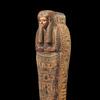

_Infinity_by_Santiago_Medina_PhotoCr100x100_c.jpg)


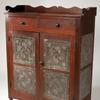

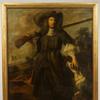
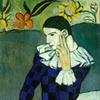

100x100_c.jpg)
